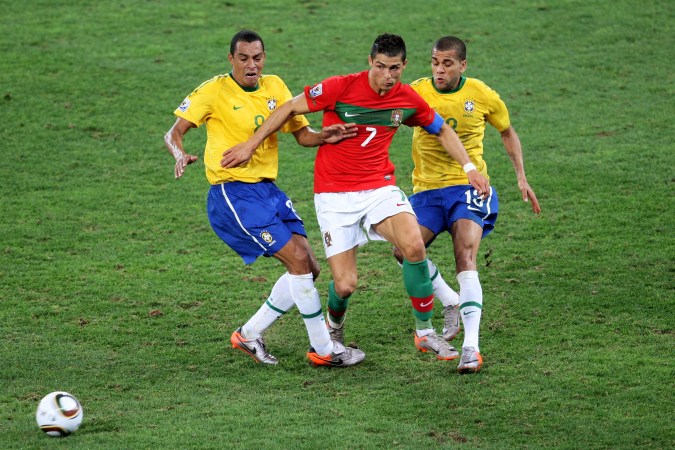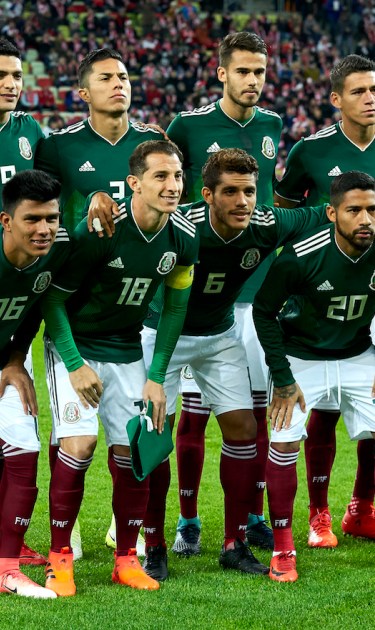As the selections from the second pot reached the halfway point during the World Cup Draw, Mexican fans might have already started to sense trouble brewing. With only four groups remaining, three of the possible match ups – featuring Brazil, Germany, and Belgium – would pose difficulties for El Tri. However, there was still hope that the nation wouldn’t be selected until the very last set, meaning a soft landing spot against Poland. Instead, Mexico received an opening date against Germany – the reigning champion. And so began a draw that would see Mexico join a line of Latin American countries placed into a World Cup group of death.
In the past, the World Cup has enjoyed a long history of groups of death. While it makes for exciting soccer, it’s not an enviable position to be in as a fan. It’s generally easy to see which two teams will make it out. For the groups of death, it’s not quite as clear cut. Reasonable minds may argue about what defines a group of death. But we know Mexico has its work cut out with Germany, but also with Sweden, which eliminated perennial contenders Italy in a qualification playoff, and South Korea, which recently defeated Colombia in a friendly.
But landing in this position is no automatic death sentence, and history proves it. In 2014, an ascendant Chile, featuring a golden generation of players who would go on to win Copa América twice, faced an intimidating draw against defending champion Spain, eventual semi-finalist the Netherlands, and Australia. While the odds favored the European giants qualifying together, Chile’s 2-0 victory over Spain allowed it to survive.
Landing in the death group is no automatic death sentence.
That same year, Uruguay and Costa Rica surprised European powerhouses England and Italy in high-octane battles. When these four teams were drawn together, the prevailing thought might have been that Uruguay, England and Italy would battle against each other for two spots while leaving the CONCACAF side as the group’s easy game. As it turned out, Costa Rica not only triumphed, but advanced to the quarterfinals, where it lost on penalties to the Netherlands.
The 2010 World Cup featured Brazil in a difficult spot against Portugal, North Korea, and the Ivory Coast. This Brazil team was not the powerhouse we usually expect to see, containing less star power than usual with Dunga omitting Ronaldinho and ignoring demands from fans to call up an 18-year-old wunderkind named Neymar. Regardless, this group had plenty of stars, with Portugal being led by Cristiano Ronaldo, who was coming off an excellent debut season for Real Madrid and was just entering his prime years, and Ivory Coast boasting a slew of players who had (or would eventually) star in the Premier League, like Yaya and Kolo Touré, Salomon Kalou, and Didier Drogba. However, even a weakened Brazil was able to advance out of this tricky set up before eventually falling in the quarterfinals. And Dunga was never allowed to ruin a Brazil team again (until 2014, when he was inexplicably re-hired before being re-fired in 2016.)

Back in 1970, Brazil, England, Czechoslovakia and Romania ended up in the same set. England was the defending champion, Brazil won in 1958 and 1962, and Czechoslovakia made it to the finals only to lose in 1962. Despite this competition, the Seleção triumphed in all of the group stage games before going on to win the entire tournament.
Just as success is possible, so is defeat. In 1982, Brazil found itself in a frightening situation in the second round with Argentina and Italy. The team free-wheeled with delightful soccer, but Italy’s Paolo Rossi got the better of the artful Brazilians.
In 2002, Argentina faced arch rivals England, Sweden, and Nigeria. The Albiceleste, one of the pre-tournament favorites, ended its run in the group stages with just four points.
While Mexico will face some tough opponents in Russia, it’s not alone. Group D will also offer cut-throat competition and titillation. The artist at the heart of Real Madrid’s midfield, Luka Modrić of Croatia, will face off against Argentina, Iceland, and Nigeria. With Croatia’s superbly talented players, Iceland’s collective willpower, and Nigeria’s renaissance under German coach Gernot Rohr, it’s no easy feat for Argentina either. On the upside, Germany and Brazil, the sky-high favorites, were slotted in the other half of the draw.
Uruguay and Colombia were drawn in A and H, evenly balanced and open quarters, with all teams seeing the second round as a possibility. The Uruguayans will encounter Egypt, host Russia, and Saudi Arabia – two of the lowest-ranked teams in the tournament. Los Cafeteros will play Poland, the lowest seed, Senegal, and Japan. Debutants Panama and Peru will face uphill battles in their groups.
On the other hand, the luck of the draw was kinder to Brazil, Uruguay, and Colombia, which should all be favored to reach the knockout phase.
While Mexico’s path to the second round looks tricky, there are plenty of reasons to be optimistic. If it can hold its own against the likes of such stiff competition, the team will know it can stand up to anybody at the World Cup.




